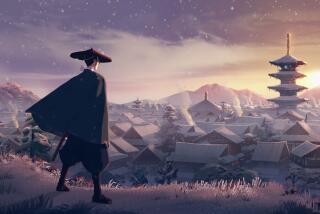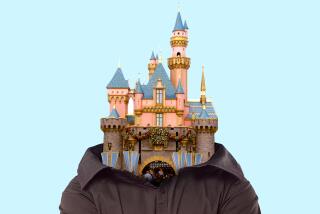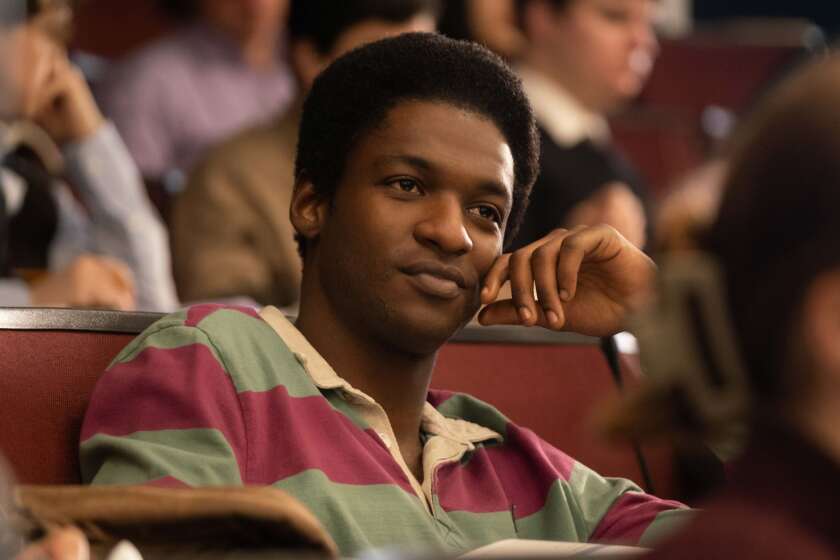Animator Floyd Norman draws on history

Floyd Norman, with Diane Disney Miller and Richard Sherman at his side, discusses the making of “Jungle Book” (1967).
Animator Floyd Norman vividly recalled the first time he encountered Walt Disney.
In early 1956, Norman was one of a few young animators hired for a one-month tryout at the Disney studio in Burbank. A few weeks into its training, the group was told to report to a screening room on the third floor of the Animation Building. Because the room was occupied, they had to wait in the hallway.
“We saw this figure step out into the hallway moving toward us,” Norman said. “As the figure moved closer, we suddenly realized — oh, my God — it was Walt Disney. We all just backed up against the wall as Walt walked by. Noticing our odd behavior, he kind of chuckled because he saw us as a bunch of geeky kids reacting to his presence. It truly was like Moses descending from the mountain.”
PHOTOS: Upcoming Disney films fall and beyond
Nearly 60 years later, Norman, a timeless 78, is going strong. He published his autobiography, “Animated Life: A Lifetime of Tips, Tricks, and Stories From a Disney Legend,” last year. He has his own blog. He still works as a storyboard artist, and he is a freelance consultant for Disney.
The Feb. 11 release of the Blu-ray of 1967’s “The Jungle Book” brought Norman back to the studio on a recent sunny afternoon. He was one of the storyboard artists on the classic, the last animated film Disney personally supervised before his death in December 1966.
Norman made history when he stepped on the Disney lot 58 years ago as the studio’s first African American animator.
Animation historian Charles Solomon disagreed with Meryl Streep’s declaration last month that Disney was an anti-Semite and a “gender bigot.” Solomon pointed out that going back to the 1930s, Disney “hired Jews, Chinese, Latinos, Japanese and female artists.”
Animation historian Jerry Beck added, “The animation industry has been colorblind. They have never cared about your background or ethnicity. The bottom line was the talent.”
PHOTOS: Behind-the-scenes Classic Hollywood
Norman described his position as “the best job in the world.”
“No matter how much we try to refute these things, they come back at us again with Disney was this and that,” Norman said. “It’s tough to get that to go away.”
After seeing Disney classics “Dumbo” (1941) and “Bambi” (1942) with his mother, he knew he wanted to be an animator at the studio.
After graduating from high school, Norman drove to Burbank one Saturday to show his portfolio but was told to go to school.
So he went to the Art Center College of Design in Pasadena. During this third year at the school, he got a call from the studio asking him, “Can you be here at 8 Monday morning?” So he dropped out.
A lot of the young artists who arrived at Disney didn’t stay long. “It was the money,” Norman said. “Disney didn’t pay that much. I shouldn’t say this, but I would have worked here for nothing.”
BEST MOVIES OF 2013: Turan | Sharkey | Olsen
Norman laughed when he recalled his visit to the Penthouse Club, which was for the “big shots, he said — a place to have your hair cut, get a massage, grab a drink at the bar.”
Norman sneaked into the club during lunch hour. “There was a door leading outside. I wondered, what’s out there? I opened the door slowly and I’ll never forget it: All I saw was a sea of fannies. At lunch time you could take your towel and sunbathe on the roof.”
Norman worked his way up the animation hierarchy on such films as “Sleeping Beauty” (1959), “101 Dalmatians” (1961) and “Jungle Book,” where he worked on storyboards for such sequences as the Mowgli and Kaa song “Trust in Me.”
After he finished his work on “Jungle Book” in 1966, he left Disney and with his friend fellow African American animator Leo Sullivan formed Vignette Films, where they produced six animated films on black history. Norman briefly came back to Disney to work as an animator on “Robin Hood” (1973) but was fired. “I think what the studio was looking to do was to reduce costs,” he said.
Eager to return to feature animation, Norman “invited myself back” to Disney animation, working as a storyboard artist on “The Hunchback of Notre Dame” (1996), then joining the story team on Pixar’s “Toy Story 2” (1999) and “Monsters, Inc.” (2001).
Norman won the 2003 Winsor McCay Award, a lifetime achievement honor that is part of the International Animated Film Society’s Annie Awards. But even after a lifetime in animation, Norman enjoys looking back at his early days at Disney. The “Nine Old Men,” Disney’s legendary core animators, were tough task masters, he recalled.
“They were demanding, and well they should be,” said Norman, a Santa Barbara native who now lives in Pasadena. “They were the cream of the crop, Disney’s best. So if you worked for them, they expected nothing less than your best. This was like joining the Marine Corp of animation. If you made it at Disney, you could make it anywhere.”
More to Read
Only good movies
Get the Indie Focus newsletter, Mark Olsen's weekly guide to the world of cinema.
You may occasionally receive promotional content from the Los Angeles Times.











